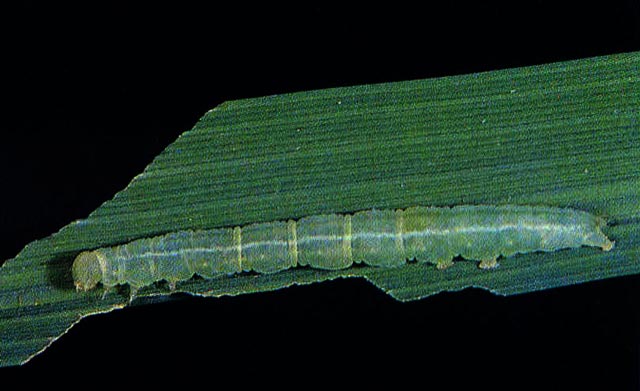Green semilooper
Naranga aenescens (Moore)
What it does
 Young larvae of semiloopers scrape the tissues from leaf blades, while mature larvae feed on leaf edges to create notches.
Young larvae of semiloopers scrape the tissues from leaf blades, while mature larvae feed on leaf edges to create notches.
Why and where it occurs
Heavily fertilized crops favor the development of green semiloopers.
Green semiloopers are found in wetland environments. They are abundant during the rainy season. The adult moths hide at the base of the plants in rice fields or in grassy areas during daytime and are active at night. Prior to pupation, the older larvae fold a rice leaf and secure it with silk to form a pupal chamber.
How to identify
Check for feeding damage, such as
- scraped leaves exposing the lower epidermis, and
- damaged leaf edges.
Its feeding damage is similar to damage caused by rice green hairy caterpillar. To confirm the cause of problem, check for presence of semiloopers:
- spherical eggs
- light green larvae feeding on rice leaves
Why is it important
Green semilooper is a minor pest of rice.
Despite its larvae defoliating the rice plants, this pest rarely causes economic loss because crops can recover from the damage. Natural enemies often suppress its populations.
How to manage
Semiloopers are generally managed by natural biological control agents: small trichogrammatid wasps, ichneumonid, braconid, elasmid, eulophid and chalcid wasps, and spiders.







